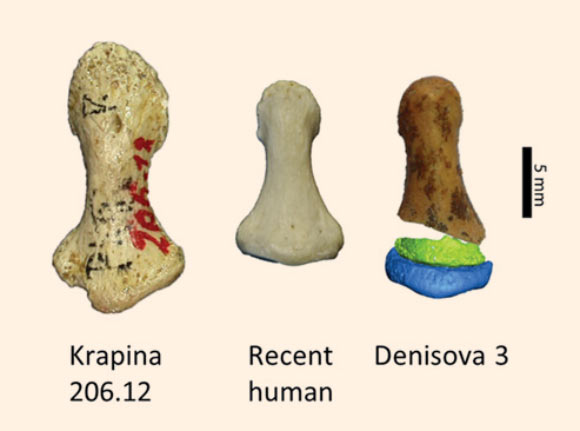An international team of scientists from Canada and Europe has identified the missing part of a fifth finger bone from the Denisova Cave, revealing that Denisovans had fingers indistinguishable from modern humans despite being more closely related to Neanderthals.

Denisovans were probably dark-skinned, unlike the pale Neandertals. The picture shows a Neanderthal man. Image credit: Neanderthal Museum.
Denisovans lived in Asia for hundreds of thousands of years, sometimes interbreeding with Neanderthals and perhaps archaic humans, with some present-day human populations still carrying Denisovan DNA.
However, only five skeletal remains are known from Denisovans, mostly molars.
In 2010, a small fragment of a finger bone yielded the Denisovan mitochondrial genome that changed our view of the evolution of hominin lineages in Eurasia.
But the specimen, dubbed Denisova 3, was too incomplete to reveal useful morphological information about the whole appendage.
In the new study, Dr. Andrew Bennett of the University Paris Diderot and colleagues identified the larger distal part of the original Denisova 3 finger bone.

Comparison of the fifth finger phalanx of a Neanderthal (Krapina 206.12), a recent modern human, and the reconstructed Denisova 3. Image credit: Bennett et al, doi: 10.1126/sciadv.aaw3950.
The researchers matched the missing fragment to the original by using DNA extraction and sequencing techniques to capture its entire mitochondrial DNA sequence.
“The digit was a fifth finger bone from the right hand of an adolescent female Denisovan who likely died at about 13.5 years old,” they said.
Dr. Bennett and co-authors also reanalyzed scans and photographs of the Denisovan finger fragments and compared them with finger bones from Neanderthals, as well as Pleistocene and recent modern humans at various stages of development.
“We show that their dimensions and shape are within the variability of Homo sapiens and distinct from the Neanderthal fifth finger phalanges,” the scientists said.
“Researchers should take caution when identifying potential Denisovan skeletal remains, since they may appear more similar to modern humans than to Neanderthals,” they added.
The findings appear in the journal Science Advances.
_____
E. Andrew Bennett et al. 2019. Morphology of the Denisovan phalanx closer to modern humans than to Neanderthals. Science Advances 5 (9): eaaw3950; doi: 10.1126/sciadv.aaw3950







